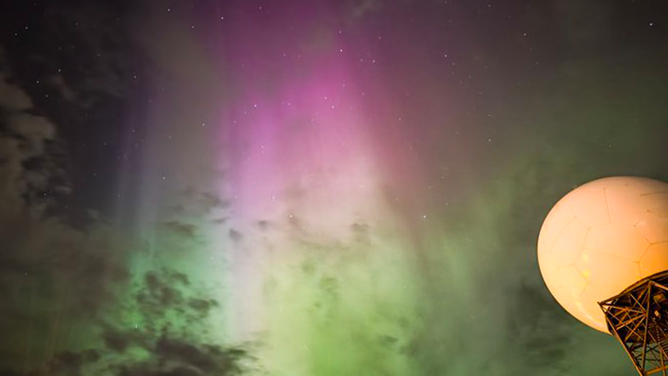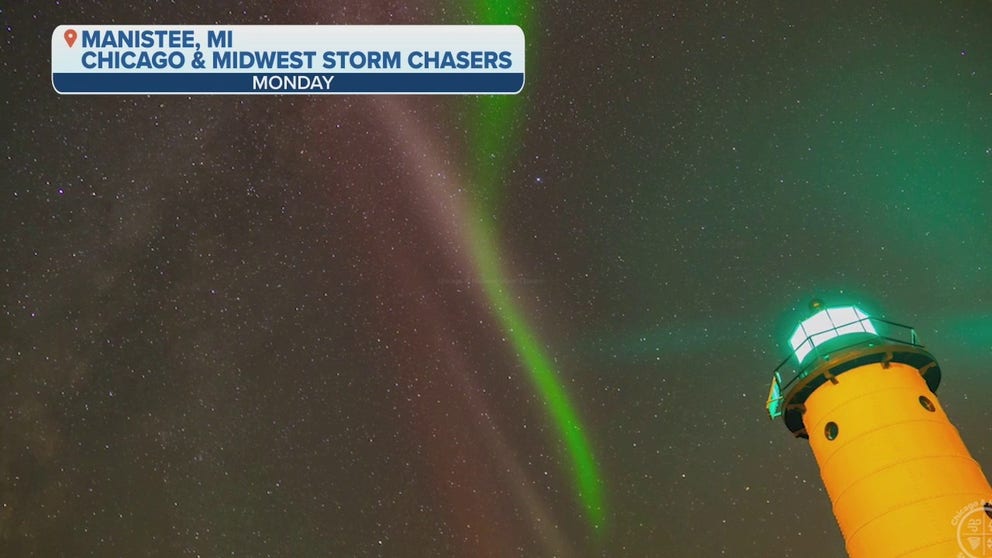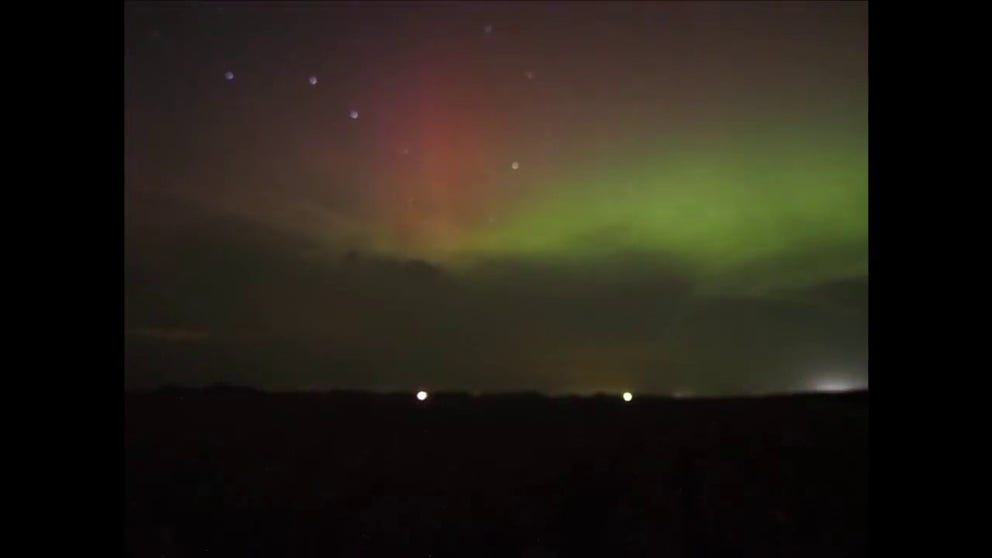Northern Lights put on dazzling nighttime display across the US
Sights of the Northern Lights were reported in Michigan, Montana and Minnesota Monday night, illuminating skies in shades of green, red and purple.
Watch: Northern Lights put on cosmic show above Michigan
Images shared by Chicago & Midwest Storm Chasers show the amazing Northern Lights display above Manistee, Michigan, on Monday night.
The Sun has been extremely active recently, with coronal mass ejections blasting through space on a collision course with Earth. And while a Geomagnetic Storm Watch was issued Monday for fears of potential issues with communications and power grids on the ground, it was a different story in the sky, with people across the U.S. reporting dazzling displays of the Northern Lights – even farther south than usual.
THE DAY THE NORTHERN LIGHTS COVERED THE PLANET: HISTORY OF EARTH'S GREATEST SOLAR STORMS

An image showing the Northern Lights in Glasgow, Montana.
(NWS Glasgow/X)
Clouds were threatening to conceal the show in Glasgow, Montana, Monday night. But the National Weather Service shared a beautiful photo of the Northern Lights putting on a brilliant display right outside their door when there were some breaks in the overcast.
"Patience is key," the NWS said on X, the company formerly known as Twitter. "Just got a good burst of pillars here at the office."
Stacey Anne Lesson shared spectacular photos showing the bright green and purple colors of the Northern Lights display in Middleville, Michigan Monday night.
Watch: Timelapse video shows Northern Lights display in Minnesota
A timelapse video recorded in Graceville, Minnesota, shows a wonderful Northern Lights display on Monday, September 19, 2023.
And Carol Bauer shared time lapse video of the Northern Lights display in Graceville, Minnesota, on X. The video shows bright colors of orange, green and purple dancing across the night sky.
Watch: Northern Lights display dances across North Dakota sky
A beautiful display of the Northern Lights was seen across the northern U.S. on Monday night and Tuesday morning. Timelapse video shows the brilliant colors dancing across the Mekinock, North Dakota.
Elan Azriel also shared time lapse video showing the Northern Lights in North Dakota. He shared the video on X and said that the "gorgeous colors and clear skies" made for a great display.
The Northern Lights generally remain confined to far northern latitudes, but stronger geomagnetic storms can cause the lights to expand farther south into the northern tier of the U.S.
If weather conditions didn't prove favorable for seeing the lights on Monday night or early Tuesday morning, more opportunities will be in the coming months.
The Sun is amid an active period in its solar cycle, which lasts 11 years.






